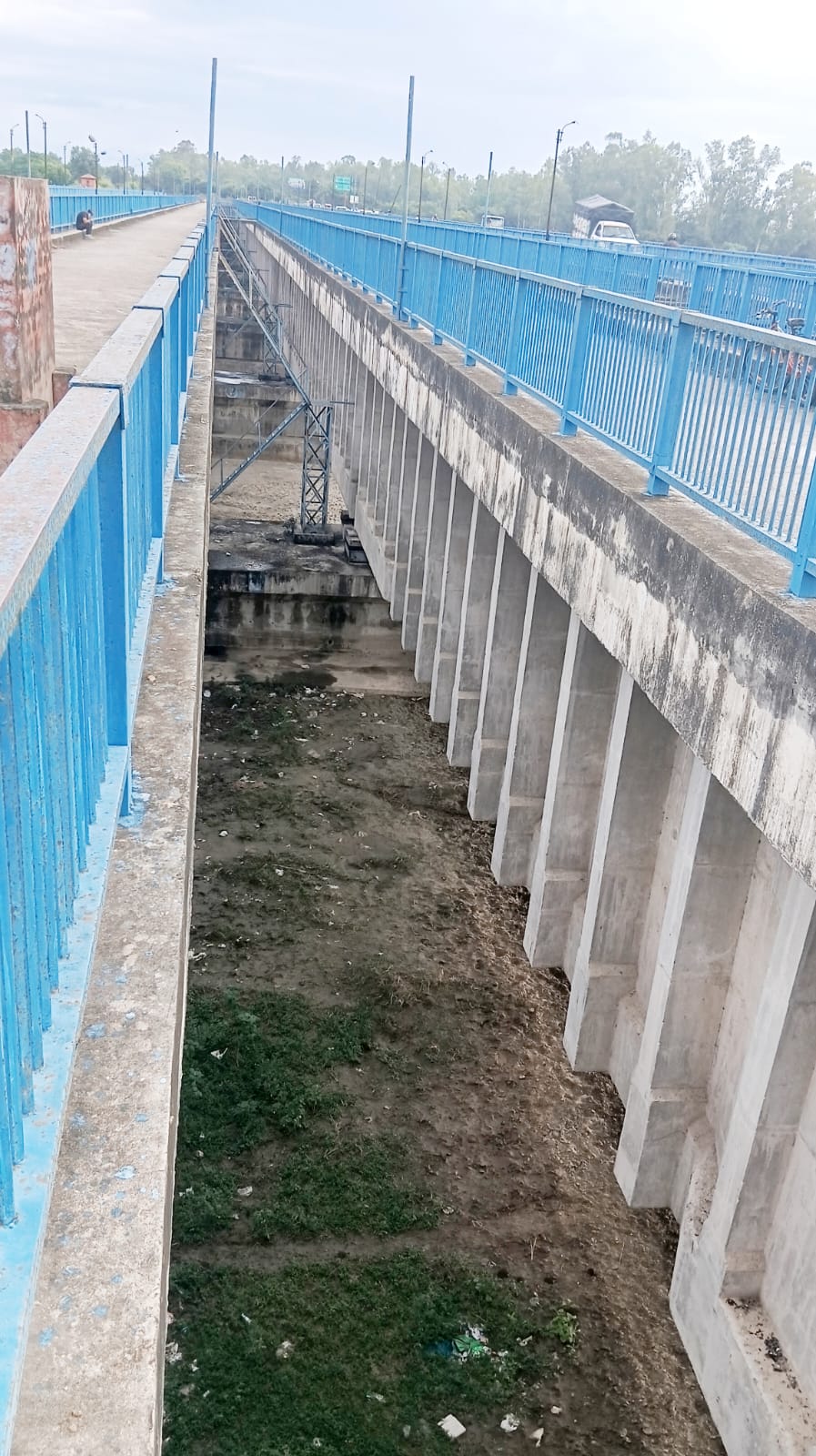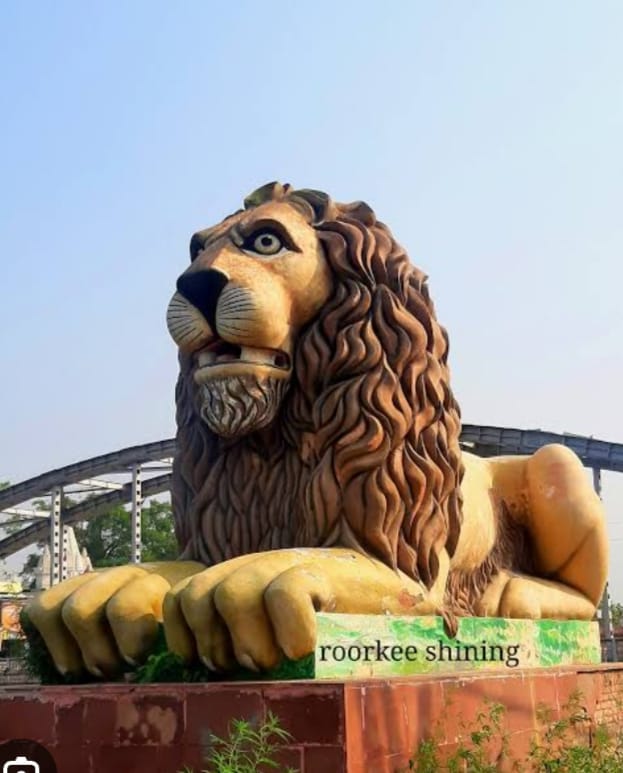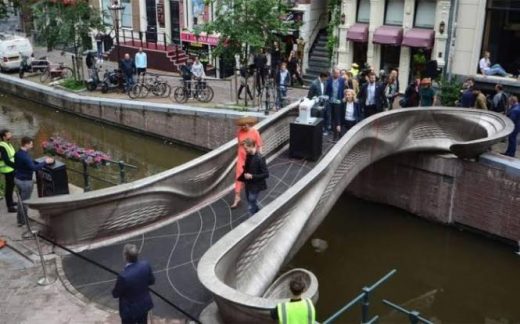By
Kaushal Kishore
Materials Engineer, Roorkee
The new Solani aqueduct on Ganges canal Roorkee was built with prestressed concrete which allows for longer spans and a simple more robust design compared to old bricks, lime- surkhi mortar masonry arches of the old aqueduct, in which 8.5 crores bricks were used, while iron railing used in the sides of two lanes were imported from England. This is interesting to note that materials bringing those days on ship from England to Indian ports take 6-10 weeks via the Suez canal or 3 to 6 months via the longer Cape of Good Hope. Calculate in it also time taken on road from Indian ports to Roorkee.
After retirement from University of now IIT Roorkee I joined M/S Roffe Construction Chemicals Pvt.Ltdd, Mumbai as it’s Chief Concrete Technologists afterwards I became it’s one of the Director.

AQUEDUCT picture taken on 7/10/2025
For the contractor of above aqueduct I designed M-40 grade of concrete with Roffe superpladticizer. Those interested may read my paper by visiting Google site and log in; Civil engineering portal The Ganges canal by Kaushal Kishore.
I had designed numerous concrete mix design almost all cements of India in this I find Utra Tech cement as one of best cement OPC and PPC both With Ultratech cement I had designed numerous concrete mixes from ordinary strength to M-80 grade concrete, self compacting concrete, shot crete concrete, fibre reinforced concrete, fly ash concrete and more There is life after retirement and after retirement I worked for 30 year’s which includes in free time working in home research and testing laboratory and numerous construction sites visits almost all India and outside India. At my age of 92 years I still work for 12 hours daily.
I had never worked for money. In spite of doing so gigantic work what to say about car I even do not have 2 wheeler not any of my house not a single inch of land in this world only pension from IIT Roorkee and few clothes

























anybody please send me a G+2 frame structure analysis (done at staad pro)and design in pdf format
why specific gravity of cement is more than aggregates?
i want research about recycle steel fibers.
What is the life span of RCC Slab? If Leakage and monsoon water go inside
and small part of finishing plaster is drooped down.It is a Adjoining slab to Main slab.At the time of joining precaution is carried out,After 10 years this phenomena starts.Can I Broke adjoining slab? Please Guide me.
Thanks.
I am not civil eng’r.
Please not that adjoining slab is in center of main slab.
Sir I want crushing strength of penna cement
I am a civil engineering student at uniniversity of rwanda-cst
Sir I want crushing strength of penna cement
Am a finalist B Tech civil Eng i want to know much about culverts technology i want to specialize in hydraulics
Does tidal energy harvesting comes under hydraulic engineering?
Can anybody give detailed information regarding GP2 grouting powder. How does it offer such high early strength without addition of chlorides? Plzz give detailed information
see gp2 is non shinkage waterfroofing meterial mostly plumping pipe packing were concrete structures.
I want some journal papers of hydraulic engineering..
i study in diploma in civil in 2nd year. how the find out the tensile strength of cement & steel.
you can’t find the tensile strength of cement directly, it can be found by conducting compressive strength of cement on cement cube of size 7.07 cm using 1:3 ratio of cement to sand and then from that u can take the tensile strength as 15% of compressive strength
and U can find the tensile strength of steel by using the universal testing machine(UTM), In that a steel bar is placed of known cross sectional area and then on that a tensile load is applied with the help of loading device in the UTM and then tensile strength is = load/ cross sectional area
It’s nothing but refer IS 456:2000
Hi friends this is raviteja mukkara vvvv happy and good afternoon.ok concrete is a mixer of cement,course and fine aggregate it is general one OK my ? is Y we are not using wood and small dry tree pics in concrete
Friend the major reason is that the cement will not form a better bound with the pieces. Even if u cut it in an appropriate size then in the long run it will deteriorate due to water, termites, temperature and humidity etc.. And also the wood is not in as plenty as stones.
Because wood is a bio degradable material and it will decompose over time. It will not take any load
Hi sir good mring
Wood pieces are weak in compression
I want earthquake engineering journals.
i am studying civil engineering 1st year……….this site is most usefull to cvl students………..
why should we add sand in concreate????instead of that can we add anything
we can replace sand with so many things partially or completly for example now a days we are using saw dust obtined from granite quarries we can also replace the sand with rubber reserch is going on
for there should be course aggregate to take the load and the fine aggregate is supposed to fill the vacant and distribute the load
To fill the voids in concrete mix
Because it fills the voids which not fill by coarse aggregate simultaneously it reduces the amount of cement required.. Yes we can use stone chips having size not more than 6mm it gives better results and available at cheaper rate than sand..
they are excellent, i like you so much
It must be elect engg.But all the projects touch most of the branches of engg
what is hydruallic deapth bacially not in mathmatically form what siginifacance of it in open channel flow
in chezzy and manning equnations slope is what (energy slope or bed slope)